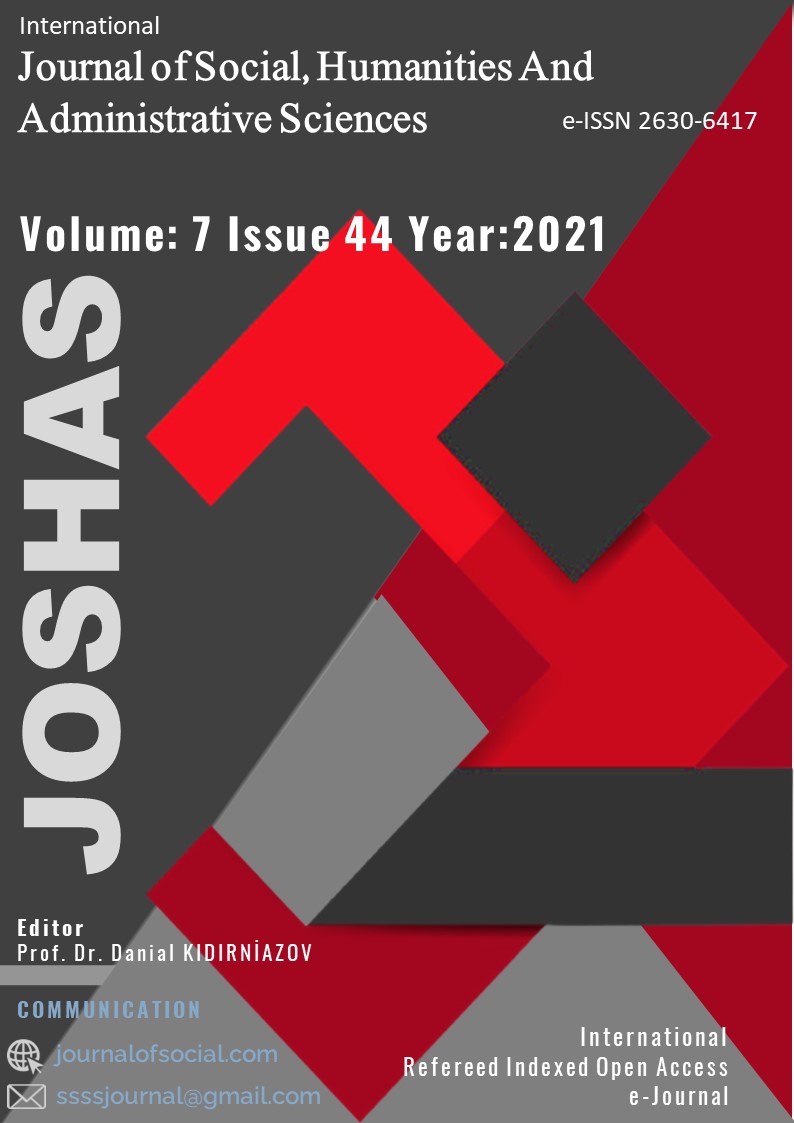Author :
Abstract
Senoryo ve yönetmenliği Yavuz Turgul’a ait olan Muhsin Bey filmi döneminin popüler kültürünü yansıtan bir eserdir. Filme konu olan arabesk kültür, kültürel değişim olgusunun sinemasal göstergebilim açısından değerlendirilmesine uygundur. Çalışmanın amacı dönem kültürünün sinemaya yansıyan yönlerini göstergeler aracılığıyla incelemektir. Araştırma kapsamında film afişinin göstergebilimsel analizi yapılmıştır. Göstergebilimsel analiz Barthes’ın göstergebilimsel yaklaşımı kullanılarak yapılmıştır. Barthes’a göre imgelemin anlamlandırma düzeyi düz ve yan olarak ikiye ayrılır. Düz anlam düzey olarak görülen ve gösterenden oluşurken; yan anlam ise gösterilendir. Gösterenin temsil ettiği şey düz anlam iken; göstergenin nasıl temsil ettiği yan anlam olarak nitelendirilir. Bu amaçla gösterge ve göstergeye ilişkin kodlar imgelem-anlam çözümlemesi şeklinde uygulanmıştır. Çalışmanın son bölümünde ise iletilmek istenen mesaj dilbilimci Seasure‟un göstergebilimsel analiz yöntemine göre yorumlanmıştır.
Keywords
Abstract
Semiotic Image Analysis: "The Example of Muhsinbey Movie Poster" Muhsin Bey, the screenplay and director of Yavuz Turgul, is a work that reflects the popular culture of the period. The arabesque culture, which is the subject of the film, is suitable for the evaluation of the phenomenon of cultural change in terms of cinematic semiotics. The aim of the study is to examine the aspects of the culture of the period reflected in the cinema through indicators. Within the scope of the research, the semiotic analysis of the movie poster was made. Semiotic analysis was made using Barthes' semiotic approach. According to Barthes, the level of signification of imagination is divided into two as straight and lateral. While the denotation consists of the signifier and seen as a level; connotation is the signified. While what the signifier represents is literal; how the sign represents is characterized as connotation. For this purpose, the indicator and the codes related to the indicator were applied in the form of imagery-meaning analysis. In the last part of the study, the message to be conveyed is interpreted according to the semiotic analysis method of the linguist Seasure.
Keywords
- Barthes, (2012). Göstergebilimsel Serüven. Çev. Mehmet Rıfat, Sema Rıfat. İstanbul Yapı Kredi Yayınları.
- Barthes, (2012). Göstergebilimsel Serüven. Çev. Mehmet Rıfat, Sema Rıfat. İstanbul Yapı Kredi Yayınları.
- Çeken, B. & Aypek Arslan, A. (2016). İmgelerin Göstergebilimsel Çözümlenmesi “Film Afişi Örneği”.Bayburt Eğitim Fakültesi Dergisi, 11(2),0-0.Retrieved frohttps://dergipark.org.tr/tr/pub/befdergi/ issue/28762/307856
- Gombrich, (1976). Sanatın Öyküsü, Remzi Kitabevi Yayınları.
- Kearney, Richard, Modern Movements in European Philosophy, Manchester University Press, Manchester, 2003.
- Leppert, (2002). Sanatta Anlamın Görüntüsü İmgelerin Toplumsal İşlevi. Çeviren: İsmail Türkmen, İstanbul: Ayrıntı Yayınları.
- Locke, John, İnsanın Anlama Yetisi Üzerine Bir Deneme, Çev Meral Delikara Topçu, ÖtekiYayınevi, Ankara, 1999.
- Mitchell, (1986). Iconology: Image, Tex, Ideology. Chicago and London: The Universty of Chicago Press. Parsa, (2008). Film Çözümlemeleri, Mutltilingual Yayınları.
- Rıfat, (2009). Göstergebilimin ABC’si. Say Yayınları.





